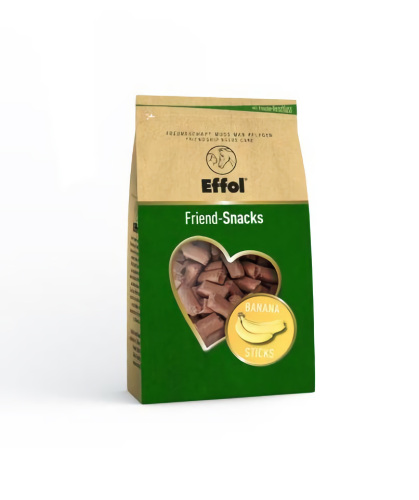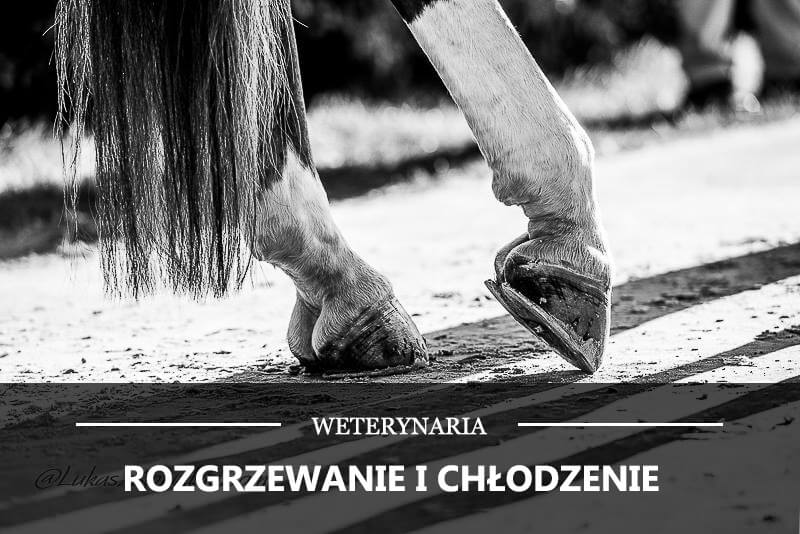
źródło tła:
dressage.pl, fot. Łukasz Kowalski
Zima to okres, w którym łatwo o kontuzję. Ujemna temperatura na zewnątrz, nieodpowiednio rozgrzany koń = urazy mięśni, ścięgien czy więzadeł. Często pojawia się też lód, na którym podkute konie łatwo się ślizgają, co także może nadwyrężyć ich układ mięśniowo-powięziowy.
Wracamy do stajni po treningu albo przychodzimy na kolejną jazdę i widzimy, że nasz koń ma spuchniętą kończynę. Wielu z nas jest wtedy w kropce. Na zewnątrz zimno, a w stajni ciepło. Chłodzić tą nogę czy rozgrzewać? Mamy nadzieję, że rozwiejemy Wasze wątpliwości ;)
Kiedy rozgrzewanie, a kiedy chłodzenie
Podstawy
Działanie ciepłem i zimnem należy do najbardziej efektywnych metod, przyspieszających leczenie i skracających czas trwania kontuzji. Oczywiście metoda ta działa, tylko wtedy, gdy jest używana w odpowiednim momencie. Możemy leczyć w ten sposób zarówno końską tkankę miękką, mięśnie, ścięgna, jak i więzadła.
Pamiętajmy jednak, że działanie ciepłem i zimnem nie działa na zerwania i poważne uszkodzenia powyższych tkanek i nie powinno być leczone bez konsultacji z lekarzem weterynarii.
Metoda ciepło-zimno sprawdza się jedynie przy stłuczeniach, nadwyrężeniach i naciągnięciach, a także jako działanie prewencyjne przed i po treningu, sprzyjając regeneracji kończyn.
Co ciekawe, możemy ją stosować także u siebie na przykład przy stłuczeniach, naciągnięciach i nadwyrężeniach.
Uwaga!
Przy urazach, które nie trwają dłużej niż 36 godzin zawsze pojawia się u koni obrzęk, opuchlizna, a u ludzi również siniaki i stłuczenia.

źródło:
dressage.pl, fot. Natalia Łabuzek
Faza I - chłodzenie
To etap, w którym pojawia się opuchlizna, obrzęk i bolesność. Trwa do 36 godzin od momentu, w którym koń nabawił się urazu. Poniżej kilka przykładowych sytuacji.
1.Wracamy z treningu i widzimy, że noga naszego konia niebezpiecznie zaczyna rosnąć. Koń lekko "znaczy" lub kuleje.
2. Zabieramy konia z pastwiska i widzimy, że jego szyja nosi ślad soczystego kopniaka. Miejsce jest bolesne i nabrzmiałe.
3. Przychodzimy do stajni, by zabrać konia na trening. Podczas czyszczenia zauważamy, że jego tylna kończyna jest dwukrotnie większa od pozostałych.
Zanim przystąpimy do jakiegokolwiek działania warto poszukać przyczyn urazu. Jeśli nasz podkuty koń był na pastwisku, na którym jest lód, być może poślizgnął się i wpadł na coś bądź upadł, naciągając mięsień lub więzadło, ratując się przed utratą równowagi. Ewentualnie wdał się w bójkę z innym wierzchowcem.
Jeśli uraz wystąpił po jeździe lub powrocie z terenu warto przemyśleć, co takiego mogło się wydarzyć. Sama kulawizna nie świadczy przecież o uszkodzeniu tkanki. Przyczyn może być wiele, dlatego nie warto od razu działać "na zaś", ale dokładnie obejrzeć chorą kończynę, obmacać, w tym także końskie kopyto. Każda różnica temperatury, powinna zostać przez nas wychwycona, ponieważ kończyna lub miejsce, które zostało nadwyrężone jest zawsze dużo cieplejsze niż pozostałe miejsca. Na przykład noga, która jest obolała, będzie gorąca w porównaniu do pozostałych kończyn konia.
Jeśli jesteśmy pewni, że nastąpił jakiś uraz - naciągnięcie lub nadwyrężenie mięśnia, więzadła, ścięgna lub uszkodzenie tkanki miękkiej, to świeżą opuchliznę/obrzęk (do 36 godzin od wystąpienia urazu) należy schłodzić.
Podstawową metodą chłodzenia jest długotrwałe oblewanie miejsca wodą, początkowo letnią, a stopniowo coraz chłodniejszą. Latem nie jest to problemem, jednak zimą nie każdy dysponuje ogrzewaną stajnią i myjką w środku. Wtedy warto się zdecydować na maści i glinki chłodzące, które dobrze jest zastosować także po etapie chłodzenia wodą. Świetnie sprawdzają się one nie tylko podczas leczenia urazów, ale również po treningu, odprężając i regenerując kończyny.
Terapia zimnem (krioterapia) pomaga zapobiegać zapaleniom, które nieleczone mogą spowodować poważniejsze uszkodzenia. Działanie zimnem zwęża naczynia krwionośne, co przeciwdziała powstawaniu krwiaków i siniaków u koni niewidocznych pod sierścią. Wystarczająco wcześnie zastosowane chłodzenie na miejsce urazu, może znacznie skrócić czas leczenia, minimalizując uszkodzenia tkanek.
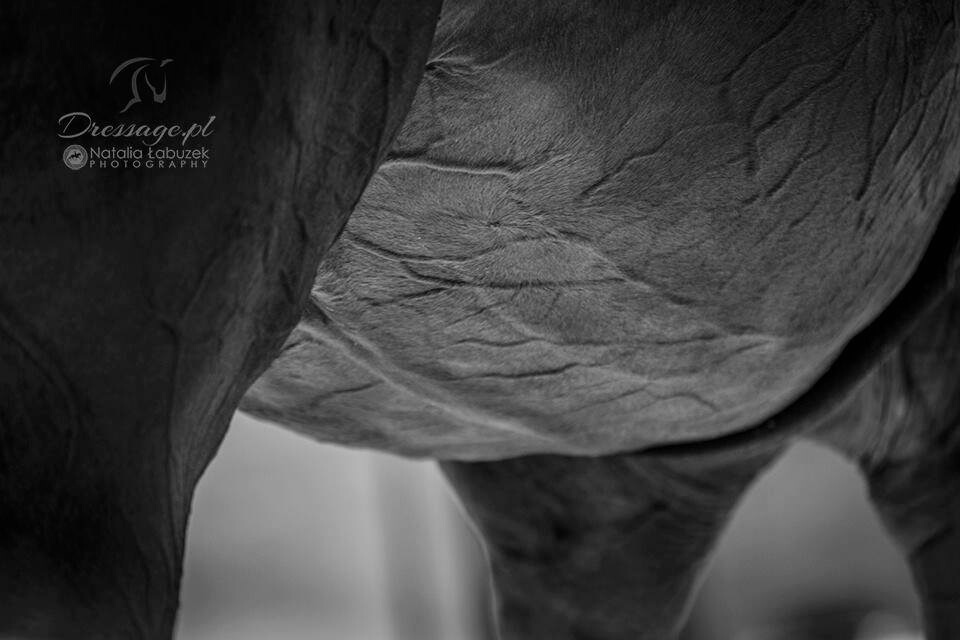
Faza II - naprzemienne rozgrzewanie i chłodzenie
Po upływie 36 godzin od powstania urazu, opuchlizna przestaje się powiększać i wyraźnie widać, jakiego obszaru dotyczy. Miejsce uszkodzenia tkanki staje się też twardsze.
To etap naprzemiennego stosowania terapii ciepło-zimno, w którym powinniśmy zaaplikować maść lub glinkę rozgrzewającą, poprawiającą krążenie, dzięki czemu tempo leczenia tkanek wzrośnie oraz uruchomią się odpowiednie procesy biochemiczne, które je zregenerują i odbudują. Po ok. 3-4 godzinach można znów zastosować maść lub glinkę chłodzącą, która zapobiegnie powstawaniu nowych obrzęków.
W zależności od wielkości uszkodzenia ten etap może potrwać dłużej lub krócej od kilku godzin do nawet doby. Powinniśmy jednak zauważyć znaczną poprawę.
Uwaga!
Stosując maść o silnym działaniu rozgrzewającym bez upewnienia się, że nastąpił jakikolwiek uraz, doprowadzamy do uszkodzenia zdrowych tkanek. Warto więc używać jej z rozwagą.
Jeśli nie ma urazu, a zależy nam jedynie na regeneracji tkanek po treningu, warto zdecydować się na jakiś preparat, który nie będzie miał tak silnego działania (przykładowe preparaty znajdziecie niżej na zdjęciu).
Faza III - rozgrzewanie
Nasz koń powinien poczuć się znacznie lepiej, a opuchlizna powinna się zmniejszyć bądź nawet zupełnie zniknąć. Miejsce urazu może być wciąż twarde i zesztwyniałe, powodując dyskomfort konia. Jeśli chodzi o temperaturę uszkodzonego miejsca, powinna wrócić do normy.
Jest to etap, w którym wciąż powinniśmy działać, stosując maść lub glinkę rozgrzewającą. Pomoże ona, podnosząc krążenie, w naprawianiu uszkodzonych tkanek i usuwaniu zanieczyszczeń z chorego obszaru. Rozgrzewanie przyspiesza proces leczenia. Może być ono szczególnie przydatne także, przy powracających starych kulawiznach.

źródło:
dressage.pl, fot. Julia Świętochowska
Kilka pytań i odpowiedzi
1. Co robić jeśli miejsce urazu jest ciepłe?
Warto po kolei przejść przez wszystkie wymienione przez nas etapy. Od chłodzenia, przez naprzemienne rozgrzewanie i chłodzenie, aż do końcowego rozgrzewania.
2. Co robić jeśli miejsce urazu jest zimne?
Jeśli istnieje możliwość, że nie zauważyliśmy w porę urazu (np. po treningu koń nie wychodził ze stajni, a nas nie było jeszcze przez kilka dni, więc nie miał kto zauważyć, że coś jest nie tak), to warto pominąć I etap - chłodzenia i przejść od razu do II etapu: rozgrzewania/chłodzenia, a następnie do fazy III - rozgrzewania.
Jeśli to prawdopodobnie stary uraz, np. powracająca kulawizna, w takim wypadku warto jedynie rozgrzewać.
Co jeżeli, nie jest to niezauważony w porę uraz, ani też powracająca kulawizna? W takim wypadku warto zwrócić się do lekarza weterynarii, gdyż może być to coś poważniejszego i nasze zabiegi nie przyniosą pozytywnego efektu.
3. Czy na miejsce urazu, posmarowane maścią chłodzącą/rozgrzewającą warto nakładać owijki lub ochraniacze?
Odpowiedź brzmi: zdecydowanie nie. Jeśli chłodzimy końskie kończyny, to logicznie rzecz biorąc, zakładanie czegoś na miejsce urazu je ogrzewa. Zaprzeczamy więc idei chłodzenia.
Jeśli na miejsce posmarowane maścią rozgrzewającą założymy owijki bądź jakiekolwiek ochraniacze, nawet transportowe to możemy doprowadzić do powstania poparzeń. Jeśli chcemy długotrwale ogrzać kończynę, lepiej zdecydować się na glinkę rozgrzewającą.
4. Jak dbać o kończyny przed i po treningu?
Latem po treningu warto chłodzić kończyny za pomocą wody, zapobiegając tym samym uszkodzeniom tkanek. Polewanie wodą ze szlaucha (węża ogrodowego), relaksuje zmęczone mięśnie i odpręża je po wysiłku. Ważne jednak by chłodzić konia "od dołu", tzn. zaczynając od puszki kopytowej, kierując się powoli w kierunku stawów skokowych i dalej. Pamiętajmy, by nie polewać konia lodowatą wodą nawet latem. Najlepiej sprawdzi się letnia woda.
Na rynku jest też wiele maści, mających na celu odprężanie, relaksowanie i regenerowanie końskich kończyn, zarówno po, jak i przed treningiem. Istnieją też takie, które masując i wcierając w nogi konia przed treningiem lub zawodami, poprawiają krążenie i lepiej rozgrzewają końskie ciało, co jest przydatne szczególnie zimą.
5. Kiedy stosować maści, a kiedy glinki?
Maść dobrze stosować w krótkich odstępach czasu. Glinkę warto nakładać na noc, kiedy koń może w niej dłużej postać, bez konieczności jej szybkiego zmywania.
6. Ile czasu powinny trwać poszczególne etapy: I - chłodzenie, II - rozgrzewanie/chłodzenie i III - rozgrzewanie?
Wszystko zależy od tego jak poważne jest uszkodzenie. Najważniejsze to obserwować i sprawdzać temperaturę miejsca urazu. Ciepłą nogę możemy chłodzić przez pierwsze około 36 godzin, chociaż wszystko zależy od tego, ile czasu minie od momentu nastąpienia urazu do czasu, w którym zostanie to przez nas zauważone. Jeśli zauważymy dosyć późno, czas chłodzenia może być krótszy. Maść można nakładać co ok. 3-4h (max. 4 razy/dobę), by na początku chłodzić nogę dość intensywnie, a na noc założyć glinkę chłodzącą.
Etap rozgrzewania/chłodzenia - ma doprowadzić do stanu, w którym zejdzie opuchlizna, a miejsce urazu przestanie mieć dużo wyższą temperaturę niż reszta kończyn. Zależnie od tego jak rozległy jest to uraz, etap ten może potrwać od 24-48 godzin. Odstęp czasowy pomiędzy nakładaniem raz jednej, raz drugiej maści to przynajmniej 4-5h (max. 3-4 razy/dobę: pierwszy raz - rozgrzewanie, drugi - chłodzenie, trzeci rozgrzewanie...itd.). Dodatkowo na noc można zakładać glinkę rozgrzewającą, ale rano należy znowu schłodzić nogę maścią.
Ostatnia faza - rozgrzewania, powinna odbywać się, kiedy miejsce urazu ma już normalną temperaturę. Warto stosować rozgrzewanie jeszcze przez kilka dni, po ustąpieniu opuchlizny i po powrocie do standardowej temp, aż do ustąpienia bolesności kończyny i ewentualnej kulawizny. Maść rozgrzewającą można nakładać max. 2-3 razy/dobę w odstępach co najmniej co 4-5h.
7. Jaką ilość maści należy jednorazowo aplikować?
Pamiętajmy, by nie przesadzać z ilością. Maść warto wmasować w miejsce urazu, tak, by ilość nałożonego preparatu zwilżyła końską kończynę, wchłaniając się po pewnym czasie. Niedopuszczalne jest nałożenie grubej warstwy, która ściekać będzie po końskiej nodze. Inaczej ma się sprawa z glinką, której powinno się nakładać sporo, tak, by po zaschnięciu wyglądała nieco jak cienki gips na końskiej nodze.
Pamiętajmy, by wszelkie maści i glinki nakładać w gumowych rękawiczkach! Jeśli będziemy aplikować je bez ochrony, nasza skóra wchłonie aktywne składniki i odczujemy ich działanie.
Jak unikać obrzęków i nadwyrężeń?
Naciągnięcia lub nadwyrężenia mięśni, więzadeł i ścięgien najczęściej dotykają końskich kończyn. To one są najbardziej narażone również na urazy mechaniczne. Dlatego podczas skoków, lonżowania i wyjazdów w teren warto zakładać ochraniacze na końskie nogi, które osłonią przede wszystkim ścięgna. Za to w pracy ujeżdżeniowej doskonale sprawdzą się owijki lub ochraniacze ujeżdżeniowe. W podróży konieczne jest zakładanie ochraniaczy tranportowych.
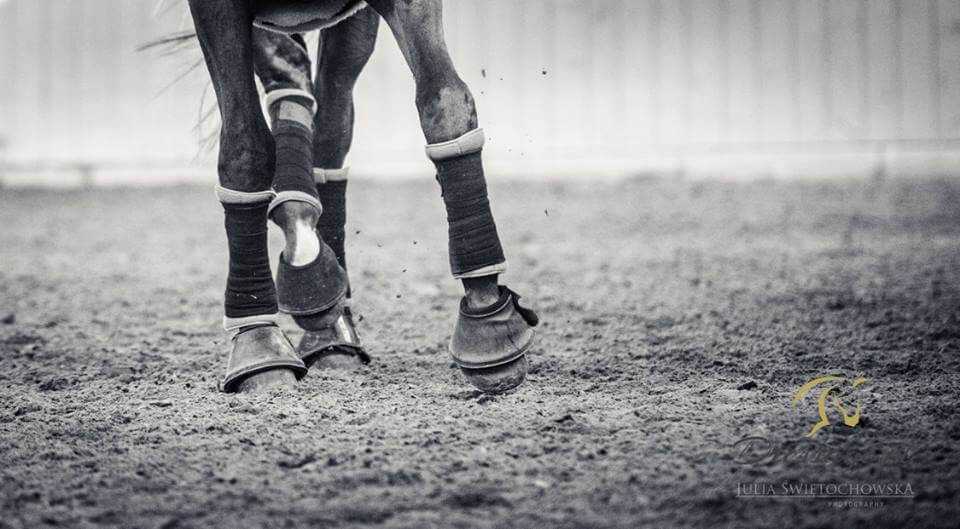
źródło:
dressage.pl, fot. Julia Świętochowska
Pamiętajmy, że lepiej chronić i zapobiegać niż leczyć ;)



 źródło tła:
źródło tła:  źródło:
źródło: 
 źródło:
źródło: 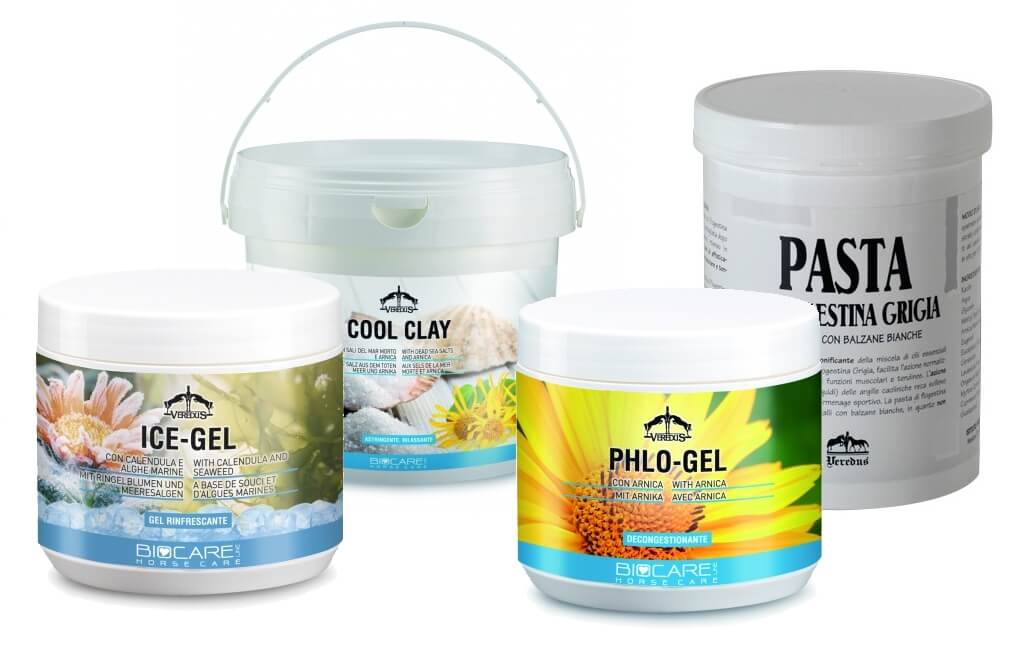 Od lewej: po treningu:
Od lewej: po treningu:  źródło:
źródło: 